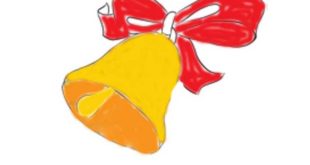While are many different styles of digital art, there are two main types of digital images. Both types of images are just data describing an image: the key difference is how they describe it.
The raw basics
First things first. In order to explain what raster and vector images are some of the details of how computer images work needs to be explained. I’ll spare the technological details though; you only need to understand the general idea to follow along.
Like your television, your computer screen is comprised of many tiny dots called pixels. Each pixel is a little dot of color, and the more pixels your screen has the clearer and more detailed an image it can display. For example, the popular high definition video format labeled 1080p is 1920 pixels wide by 1080 pixels high. When images are drawn on the screen, the pixels from the image are simply copied over the pixels on the screen.
In order to work with images, computer have to have some way of keeping track of the pixels that make up the image. That’s where the distinction between raster and vector graphics comes into play.
Raster Graphics
Raster graphics were the first of the two image types that arrived on the scene. They are simply maps of the pixels that make up the image. Each pixel has to be stored, so these take up a far amount of space. Over time, many different formats came about to find better ways to store the image’s data. Some use a palette to list the colors and then take a paint by number approach to storing the pixel values. Others store the raw value of every single pixel. Still others use fancy pattern matching approaches or compression tricks to store everything. Storing images this way involves a lot of storage; for example a simple 10 by 10 pixel image (barely big enough to display a single letter) needs to store 100 pixel values. A single frame of an HD movie requires storing a whooping 2,073,600 pixels!
Another downside of working with raster graphics is that they don’t resize well. The information the pixels store is all the information there is, so zooming in on a raster image results in a blocky mosaic of the original image. Shrinking a raster image results in information being lost as the pixels are blurred or dropped to cram as many as possible into a smaller grid.

On the left is the original image, on the right is a close up of a small portion of the image. Note how it’s simply a grid of colors.
Vector Graphics
Vector graphics are a fairly new idea compared to raster images. Instead of storing each pixel’s color, vector graphics store equations that describe a shape and the color of the shape. This has the advantage of having less information to store and they can easily be manipulated in many unique ways quickly without losing details — just alter the equation a bit. In most vector image editors, this is done by using the mouse to drag and drop the edges of the shapes like they were pieces of string.
Since equations don’t care about things like orientation or size, a vector graphic can be distorted in a large number of ways with ease. For example, in order to rotate a raster image, each pixel must be rotated individually, but a vector graphic merely changes a variable in the equation used to describe it. Thanks to this, shrinking and enlarging vector graphics result in images just as clear and crisp as the original.
While it may sound like vector graphics have a real advantage over raster, there are a number of downsides. The biggest downside is that they can’t cope well with images with a lot of different colors (for example, a photograph). This limits vector graphics to things like logos or cartoons. Another downside is that they can’t be drawn directly to a screen. Some piece of software must first draw them as a raster image before they can be displayed or printed. Worse yet, software that can do that isn’t very common. You’ll probably have to have the vector graphics editor export the image as a raster image file yourself.
On the left is the original image, on the right is a close up of a small portion of the image. Note how enlarging that portion didn’t make it any less sharp.
Usage
When you make artwork on the computer, both raster and vector editors can be a large help. Having both around and being familiar with them will greatly assist you in producing amazing pieces with ease.
Raster editors like GIMP or Photoshop are excellent for nearly everything you’d want to do. They are also the only editors that can edit complex images like photographs.
Vector editors surpass raster editors in two specific areas. They are much more effective at creating cartoons, comics, logos or other images with solid blocks of color. The other advantage they have over raster editors is their ability to produce very clean results when inking a sketch. It might be worth noting that every image on this site was created using a vector editor.
 Drawn light
Drawn light



